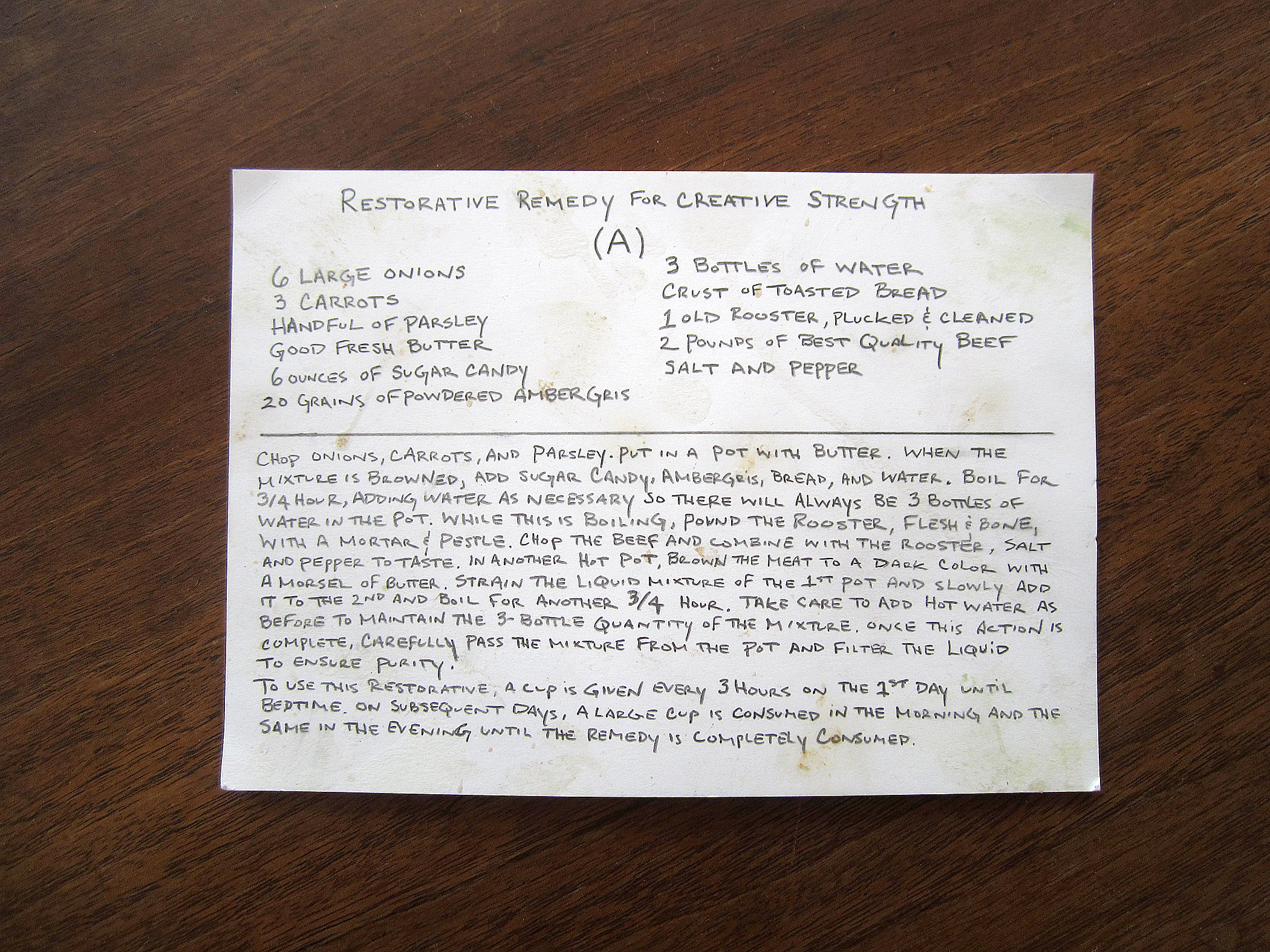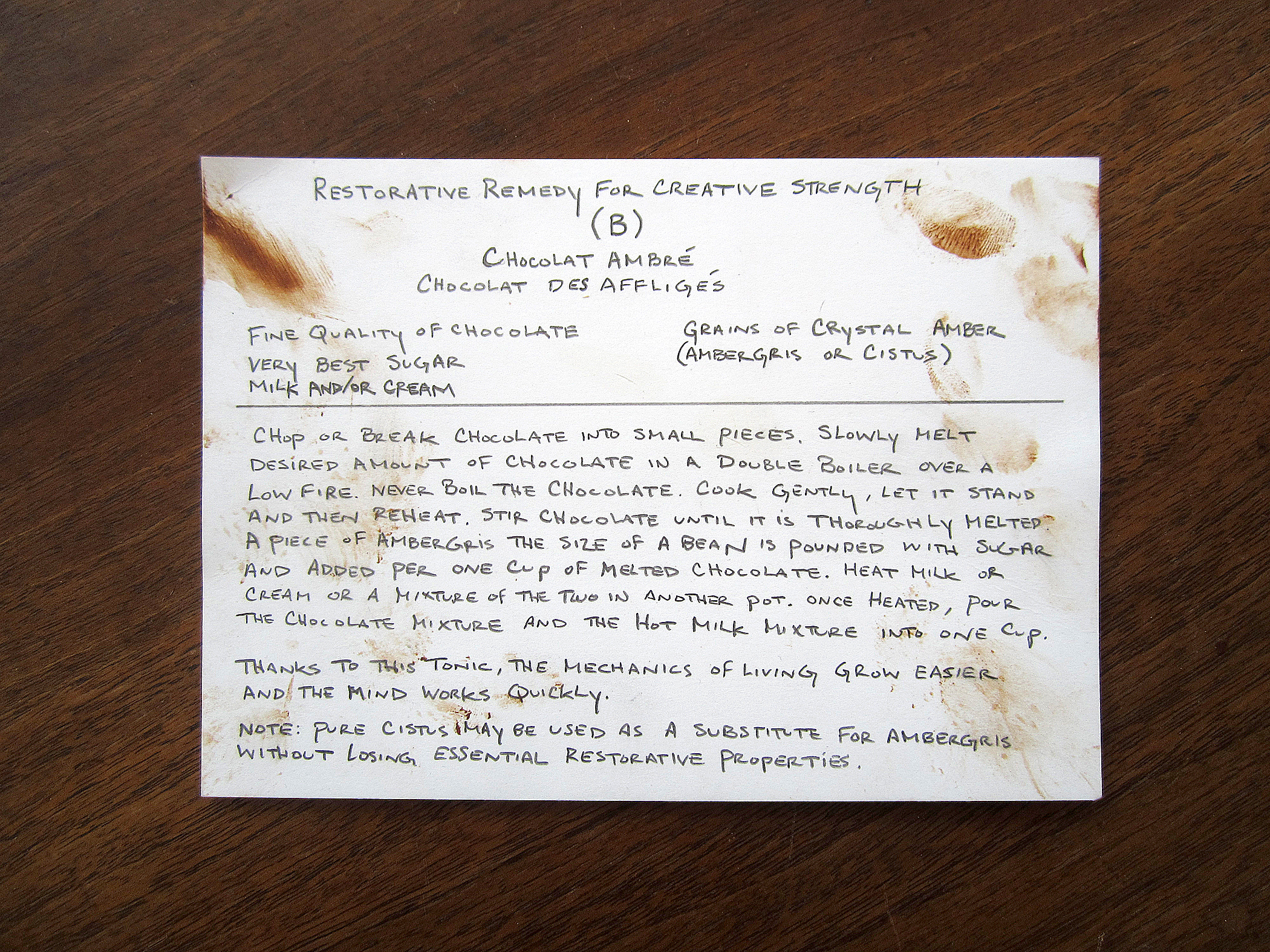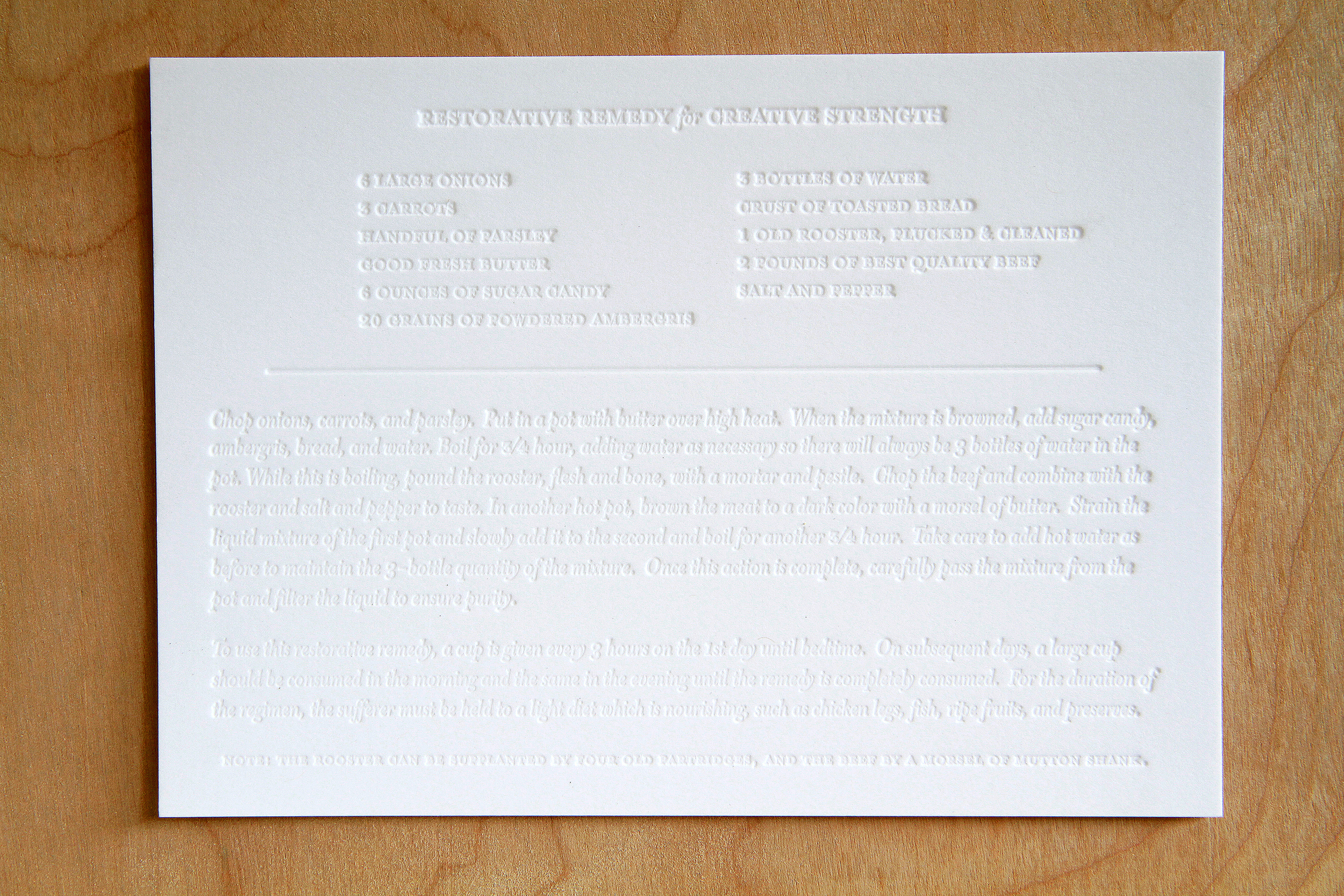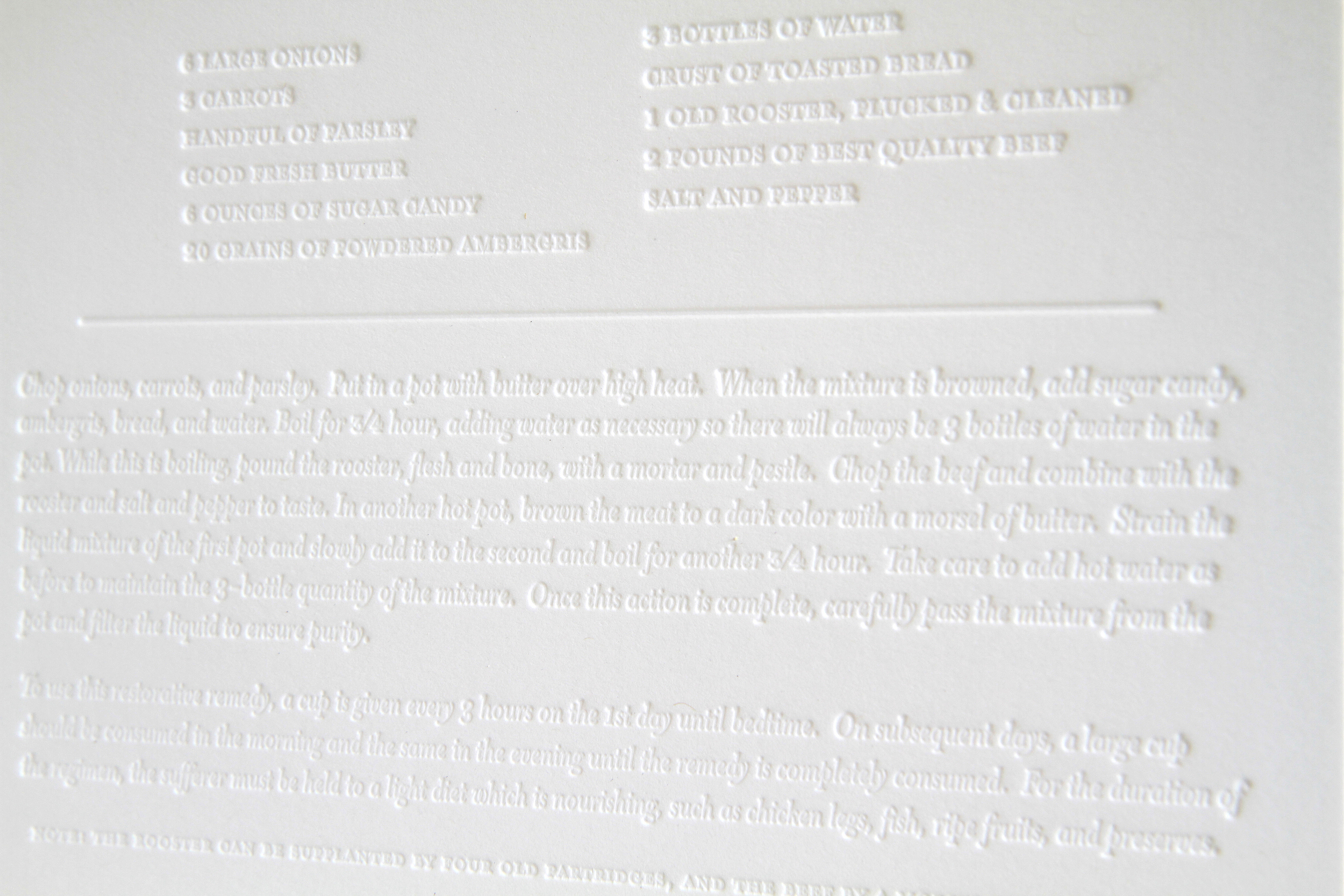Restorative Remedy for Creative Strength is a sculptural and performative installation by Christopher Reynolds that revives and reinterprets historical ideas about nourishment, creativity, and restoration. Drawing from Jean Anthelme Brillat-Savarin’s seminal 1825 treatise The Physiology of Taste: Or, Meditations on Transcendental Gastronomy, Reynolds brings to life three unique recipes Brillat-Savarin prescribed to individuals seeking to restore their creative vigor—whether for poetry, painting, or other artistic practices.
In this project, Reynolds focuses specifically on Restorative Remedy for Creative Strength "A," a formula faithfully recreated from Brillat-Savarin’s original instructions. Consisting of three distinct bottles of a carefully prepared elixir, the regimen invites the "sufferer" to consume the series of potions in sequence, symbolizing a ritual of renewal for the creative spirit. Through this act of reconstruction, Reynolds positions the creative process itself as a cycle of depletion and restoration—a dynamic that remains relevant for contemporary makers.
The installation further references the etymological and cultural origins of the modern "restaurant," a term that emerged in 18th-century Paris from the French verb restaurer, meaning "to restore." Originally, restaurants were establishments serving restorative broths and consommés designed to revitalize patrons. Reynolds integrates this history into his work by recreating a form of "restaurant" as conceptual space: a site where the focus shifts from commercial dining toward personal and artistic replenishment.
Displayed alongside the bottles are a series of recipe cards, each bearing visible indexical traces of the creative process—smudges, spills, and stains. These artifacts not only document the making of the elixir but also reinforce the performative nature of culinary preparation as an act of labor, transformation, and imperfection. By allowing the process to leave material evidence, Reynolds challenges the viewer to reconsider notions of refinement and finality.
Ultimately, Restorative Remedy for Creative Strength reframes cooking—and by extension, creating—not as a means to an end, but as an ongoing, generative process. Emphasizing production over consumption, process over product, Reynolds draws a parallel between the rituals of nourishment and the rituals of artistic practice, offering a contemplative reflection on the persistence required to sustain both body and imagination.




